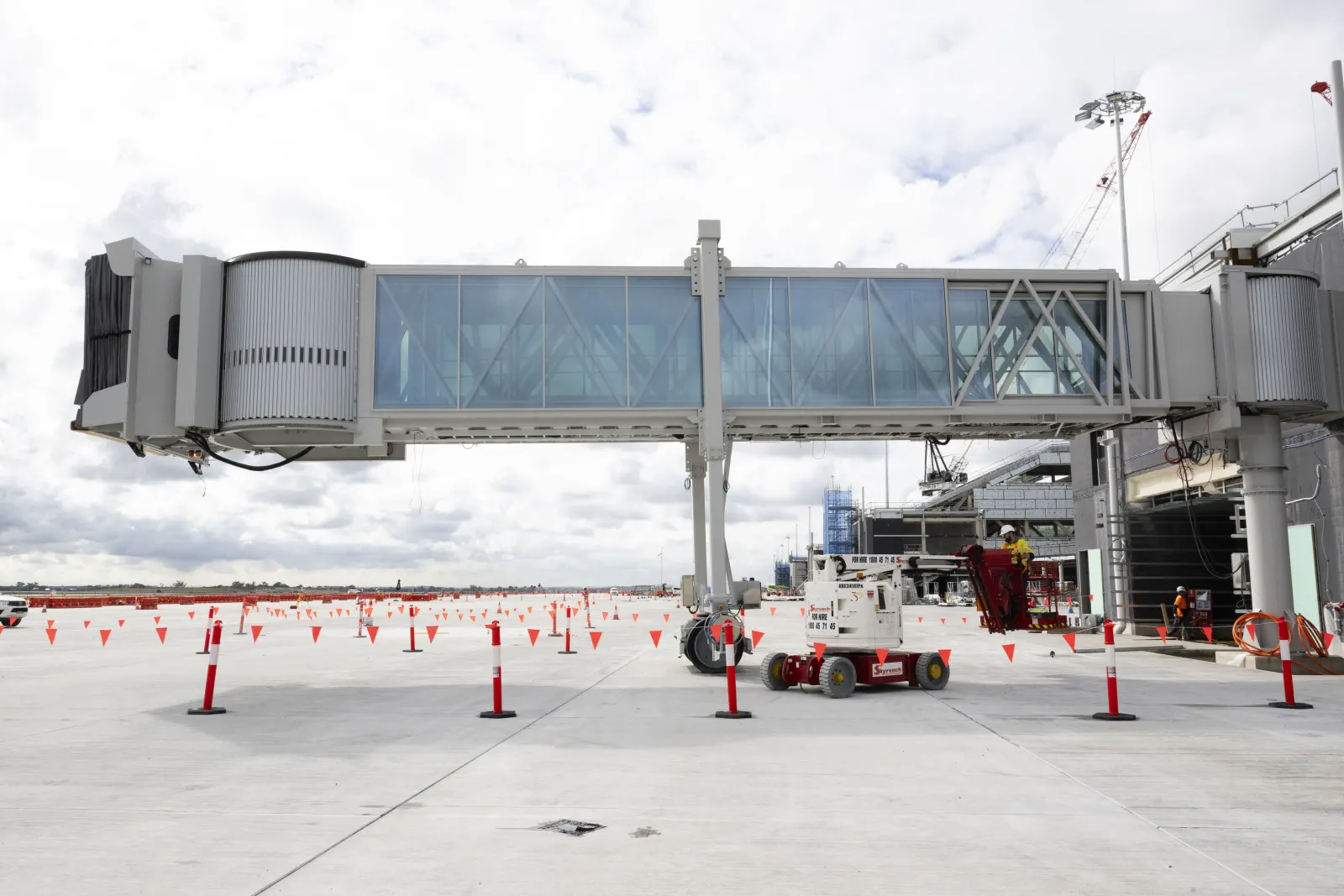Like giant claws stretching from a vast new terminal, the first of more than a dozen aerobridges have been installed at Sydney’s new international airport in the past few weeks.
In two years, passengers will begin filing off planes through the aerobridges and into the multistorey terminal, which has quickly risen from farmland flattened for Western Sydney Airport.
Standing on the tarmac, airport chief executive Simon Hickey points to the terminal’s design as critical to helping ease the “pain points” that passengers experience at airports such as at bag collection and check-in. “It’s always a bit fraught – any areas of processing. Some of that is in our control; some of it’s not if you are going through customs,” he says.

Enormous windows and high ceilings are elements of the design, allowing light to stream into the terminal. Natural light will help guide passengers to and from gates and other parts of the terminal, as well as serving a psychological purpose in calming people.
Arguably, the stunning views of the Blue Mountains from terminal gates, airport lounges and large level-one concourse will be a drawcard. In the foreground, planes will land and take off on the 3.7-kilometre runway.
Hickey spruiks the airport’s “fast taxiways” as a key part of the design, which will make the average time for aircraft to taxi from the runway to the terminal gates about five minutes. “It gets you away faster and home faster, but it also means less fuel burn,” he says.
With the massive roof due to be completed by July, it is quickly starting to resemble an airport terminal inside. Near the ground floor entrance, holes in a large wall will become bag drop-offs, while kiosks servicing all airlines will be installed. Sandstone panels cover some walls, in a nod to the local area, while a vast timber ceiling is slowly being installed above.
Accessed through a nearby pedestrian link, an enormous room contains five baggage carousels each about 90 metres long. They are connected to the main part of the computer-driven luggage system in the basement below.
It will be different to the conveyor belt systems used at other Australian airports, using digital technology to track, load and shift bags to and from planes. Passengers will be able to track their bags using an app and know when they will turn up on a carousel after getting off a flight.
Lifts, escalators and stairs will provide access to the first level of the Multiplex-built terminal, where departing passengers will pass through security screening before walking into a massive concourse lined with shops and eateries. A mezzanine level has been built above, which will be used by international passengers and become the home for airline lounges.

An advantage of the new airport – formally named after pioneering Australian aviator Nancy Bird Walton – will be the ability for parts to be switched between serving domestic and international passengers. One of the five baggage carousels – referred to as a “swing carousel” – will be able to be switched from one to the other.
The Age
